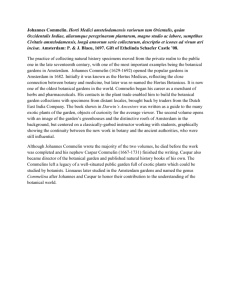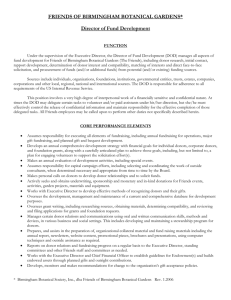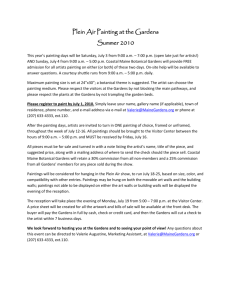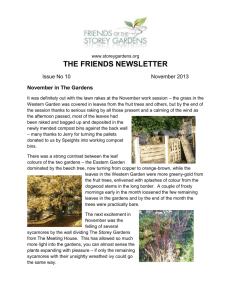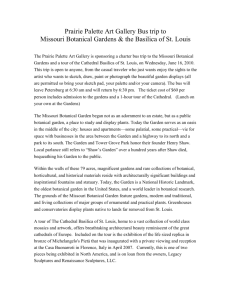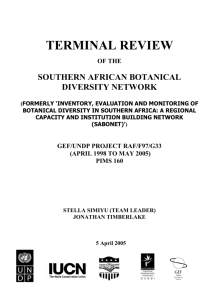Haaretz - The Jerusalem Botanical Gardens
advertisement
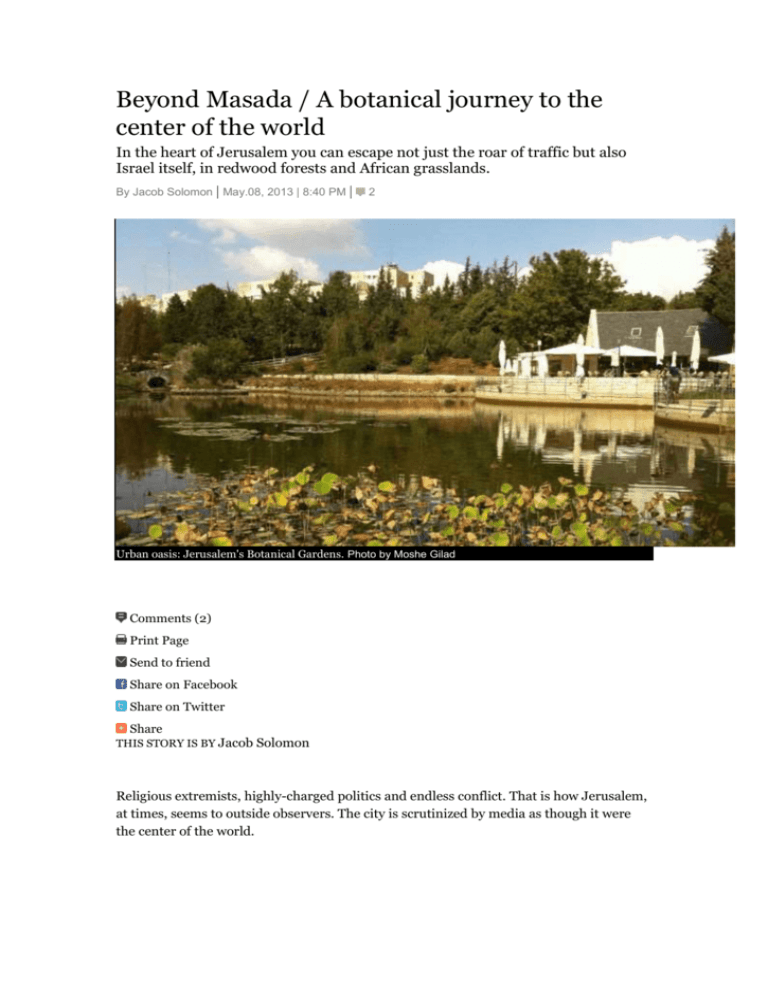
Beyond Masada / A botanical journey to the center of the world In the heart of Jerusalem you can escape not just the roar of traffic but also Israel itself, in redwood forests and African grasslands. By Jacob Solomon | May.08, 2013 | 8:40 PM | 2 Urban oasis: Jerusalem's Botanical Gardens. Photo by Moshe Gilad Comments (2) Print Page Send to friend Share on Facebook Share on Twitter Share THIS STORY IS BY Jacob Solomon Religious extremists, highly-charged politics and endless conflict. That is how Jerusalem, at times, seems to outside observers. The city is scrutinized by media as though it were the center of the world. From the vantage point of the Jerusalem Botanical Gardens, you may well agree that the city is just that – the center of the universe – but for different reasons. Here is a place where all the continents meet, from the African Savannah to tropical forests of South America. You're transported from one continent to the other by the Flower Train, which departs every hour from the entrance of the gardens, located in the Nayot neighborhood near the Hebrew University's Givat Ram campus. The train's first stop – a cone-shaped hut in a forest typical of sub-Saharan Africa. If you don’t mind waiting an hour for the next train, you have an excellent picnic spot. The children will enjoy getting lost in the nearby African savanna grasslands, while the more mature folk put together the food and drink. Leaving Africa takes you westwards into North America, without of course crossing any ocean. This section reflects North America's vast variety of climates. Look out for the magnolia trees, with their enormous early-summer white flowers. Botanists claim that magnolias are among the world's most ancient trees. They appeared in nature before bees, and were only able to reproduce through pollination by beetles. Try also to find the Pacific-coastal redwood trees, which don't yet reach the legendary heights of their Californian counterparts. The domed tropical conservatory should be peeking over the treetops as you get to the next stop. It houses the densely-vegetated, multiple-layered vegetation typical of the hot, wet tropical forests of Central and South America. Here, competition between the plants is not for water but for sunlight, lack of which causes them to starve as they need the light to produce their own food by photosynthesis. The upper canopy grabs 97 percent of the light, leaving the dense lower shrubs and grasses to struggle for the remaining three percent. Such environments need to be under the conservatory glass, as they cannot be reproduced outdoors. Unfortunately the conservatory was closed on my recent visit, though you can still get a good look through the glass partitions. A notice reassures visitors that it will be restored for 2014. You’re on the way back to home ground as you enter the Mediterranean section. Look carefully for a small hidden pond, which is used as a shelter for endangered species, such as the pink autumn crocus indigenous to Israel: Colchicum feinbruniae. And check with the visitors’ center near the entrance if you would like to sponsor the rescue of a plant species facing extinction. Also, spot the pine trees from the Canary Islands, with their lusher and more drooping character than our related native species. At the next stop, on the flanks of the Biblical section, you’re jolted back into Jerusalem’s trademark personality. Contrast the benign orange-flowering pomegranate with the more menacing bramble, featured as kings of trees in Jotham’s famous parable: “Let the fire go forth from the bramble and consume the cedars of Lebanon!” (Judges 9:15). Later known as Christ’s Thorn in connection with the crucifixion, its vicious needles stick out from the twigs at ninety degrees, which is as near as nature gets to barbed wire. Nearby relax in much-needed shade under the round canopy with its trellised vine tendrils and grapes in their very early stages of growth. Stray briefly into the adjacent herb and medicinal plant garden. Find the Ginko tree, whose natural products are said to improve failing memory. Tropical greenhouse in the botanical garden in Givat Ram, Jerusalem.Moshe Gilad Onto Australia with its eucalyptus trees, which were successfully transplanted to Israel in the early twentieth-century, to help drain the coastal swamps. Here, too, one can view species of flowers that thrive on the margins of Australia's deserts. The train passes a small waterfall before entering the European section. The Arcadian bridge over the stream would create a splendid backdrop for Shakespeare’s “A Midsummer Night’s Dream." From there you are back to the start of the circuit. Leave the train, and almost behind you is an impressive display of bonsai, whose main 300-tree collection is focused on an art form that creates sculptures using tiny potted living trees. Research into the very subtle skills of tree nurturing for art has yielded new botanical techniques used for the rescue and preservation of wild and endangered plant species. The Botanical Gardens, by the way, is there for serious as well as casual visitors. The more energetic should take the English guided audio tour (available at the entrance) and walk in the footsteps of Dr. Michael Avishai, the garden’s Emeritus Scientific Director, and founder. You will be exposed to the research aspect of this project, and learn how a vision became a reality in 1956, with the founding of the gardens. For the more biblically inclined, there is an audio tour focusing on everything from the Forbidden Fruit of the Tree of Knowledge to Biblical agriculture. These gardens are an oasis of beauty in a high-powered and often high-tension city, as well as a research center for protecting Israel's rich and increasingly threatened flora. Whatever tour you choose, cap your visit with a coffee or a kosher, dairy meal at the delightful Caffit restaurant right next to a tranquil pond. Popular with Jerusalem VIPs and families alike, this spot, with its wooded backdrop and rippling water, affords a peaceful respite only meters away from the roar of traffic along Herzog Street. The Jerusalem Botanical Gardens are located south of the Hebrew University's Givat Ram campus. Entrance is through the gas station at Nayot, on Herzog Street. There is ample parking space. Accessible by buses 9, 17, 19, and 32. Open daily 9:00-19:00, closing 17:00 on Fridays, and 18:00 on Saturdays. Entrance fee. The Flower Train departs weekdays, every hour on the hour from 10:00 A.M. until 16:00 P.M., earlier on Fridays. Call 02 679 4012.
